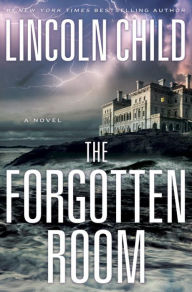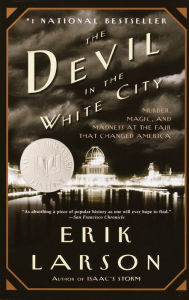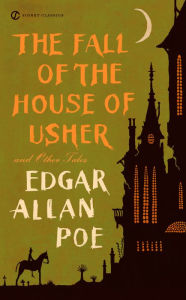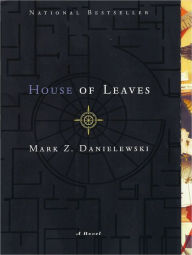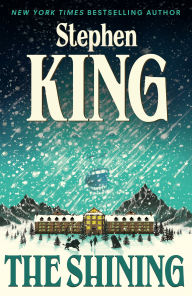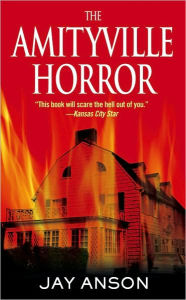Space as a Character: The Labyrinth, the Mortgage, and The Forgotten Room
The Forgotten Room
The Forgotten Room
Hardcover $26.00
In The Forgotten Room, the cracking new thriller from Lincoln Child, the story centers on, well, a forgotten room. Or, more specifically, a room in an old mansion that has been sealed off completely. Called to the huge estate by a Think Tank of scientists to investigate a mysterious death, enigmalogist Jeremy Logan discovers the room, filled with bizarre machines and offering snatches of mysterious, alarming music that set the nerves on edge.
In other words, it’s the sort of room that would make you pack your things and immediately move out. Of course, Logan sticks it out, risking life and limb (and sanity) to solve the mystery (and it’s well worth solving), but that’s because he’s a fictional character. Real people would get the heck out of there, and get on the phone with their Realtor, insurance agent, and attorney en route to a hotel.
As inventive a writer as Child is, The Forgotten Room is just the latest in a long and storied line of novels (and short stories) that treat the spaces we inhabit as the villains of the piece. Which, if you think about it, makes sense: the structures we build are supposed to be our ultimate triumph over nature. When they betray us, it upsets our entire concept of how the universe is supposed to work, and that uncanny sense that our place of refuge is trying to kill us has been celebrated in fiction since the beginning of time. (If any Cave Man Fiction survived into the modern age, almost certainly some of it would involve haunted caves.)
Gimme Shelter
Shelter is one of our most primal needs. In the modern age, it’s easy to take shelter for granted, right up until a tornado tears the roof off your home, or a hurricane floods your living room—or a simple roof leak forces you to decamp to the guest room in the middle of the night. The psychological power of shelter is so deeply buried we rarely think about it until disaster strikes, and then we tend to rationalize it into terms of money, time, and inconvenience. But at the root of it is a deep fishhook of worry and anxiety, because we know that if our shelter fails us—or, worse, actively betrays us—we’re doomed.
That’s one reason why stories about spaces trying to kill, undermine, or ruin us are as old as the hills. The Labyrinth of myth, inhabited by the testy and murderous Minotaur, is a story as concerned with the way the spaces we build can turn around and destroy us as anything else.
In The Forgotten Room, the cracking new thriller from Lincoln Child, the story centers on, well, a forgotten room. Or, more specifically, a room in an old mansion that has been sealed off completely. Called to the huge estate by a Think Tank of scientists to investigate a mysterious death, enigmalogist Jeremy Logan discovers the room, filled with bizarre machines and offering snatches of mysterious, alarming music that set the nerves on edge.
In other words, it’s the sort of room that would make you pack your things and immediately move out. Of course, Logan sticks it out, risking life and limb (and sanity) to solve the mystery (and it’s well worth solving), but that’s because he’s a fictional character. Real people would get the heck out of there, and get on the phone with their Realtor, insurance agent, and attorney en route to a hotel.
As inventive a writer as Child is, The Forgotten Room is just the latest in a long and storied line of novels (and short stories) that treat the spaces we inhabit as the villains of the piece. Which, if you think about it, makes sense: the structures we build are supposed to be our ultimate triumph over nature. When they betray us, it upsets our entire concept of how the universe is supposed to work, and that uncanny sense that our place of refuge is trying to kill us has been celebrated in fiction since the beginning of time. (If any Cave Man Fiction survived into the modern age, almost certainly some of it would involve haunted caves.)
Gimme Shelter
Shelter is one of our most primal needs. In the modern age, it’s easy to take shelter for granted, right up until a tornado tears the roof off your home, or a hurricane floods your living room—or a simple roof leak forces you to decamp to the guest room in the middle of the night. The psychological power of shelter is so deeply buried we rarely think about it until disaster strikes, and then we tend to rationalize it into terms of money, time, and inconvenience. But at the root of it is a deep fishhook of worry and anxiety, because we know that if our shelter fails us—or, worse, actively betrays us—we’re doomed.
That’s one reason why stories about spaces trying to kill, undermine, or ruin us are as old as the hills. The Labyrinth of myth, inhabited by the testy and murderous Minotaur, is a story as concerned with the way the spaces we build can turn around and destroy us as anything else.
The Devil in the White City: Murder, Magic, and Madness at the Fair That Changed America
The Devil in the White City: Murder, Magic, and Madness at the Fair That Changed America
By Erik Larson
In Stock Online
Paperback $19.00
That’s the dark side of mankind’s dominance over the world. While we have advanced to a point where we literally bend the materials around us to our will, taking stone and tree (and, in the modern day, plastic, and vinyl, and horrible wretched floral patterns) and turning them in a comfy den lined with bookshelves, we also have the capability to turn those skills to evil. History is littered with examples of structures built not to shelter and protect, but to destroy, from concentration camps to the so-called Murder Castle of H.H. Holmes, a home built specifically so Holmes could commit murder in perfect privacy (detailed expertly by Erik Larson in Devil in the White City).
There are plenty of examples of structures that simply confound, confuse, and instill a sense of dread, like the Winchester Mystery House, built continuously, in a manner that can only be described as insane, over the course of 35 years in the 19th century, complete with non-functioning bathrooms, stairs that terminate at walls, and windows that look in on interior rooms. Or the Collyer Brothers’ Harlem brownstone, which was itself a conventional home found to be filled with a truly breathtaking amount of hoarded material collected by the eccentric brothers over the course of decades—so much stuff (estimated to total more than 140 tons) that getting in and out of the home (which the increasingly unbalanced brothers had booby-trapped) was nearly impossible. So much stuff, in fact, that the police eventually concluded that one brother was crushed to death by his own hoarded possessions.
Obviously, humans are aware of the possibility of building things like Murder Castles or Mystery Houses, and the possibility that our shelter can be mis-used or perverted to such an extent that they actually become dangerous to us. When you think about how important shelter is to our survival, the idea that it might be knowingly or unknowingly turned against us is very unsettling. This is why the leaky roof keeps us awake at night. This is why places like the Winchester House fascinate us. And this is why there is such a robust tradition of space and shelter as villain—literally as a character—in our fictions.
Space as Character
When structures, homes, or other spaces are presented in fiction as haunted, or somehow perverse, or as psychic sponges that absorb and reflect the emanations of the inhabitants, it gives those inanimate objects will, agency, and even personality. After all, that spare room that is larger than it should be and occasionally has blood dripping down the walls could simply be a force of nature, like a Hellmouth or some fold in the universe allowing Lovecraftian horrors to bleed through, but more often than not there’s purpose behind it. And with purpose comes characterization: when structures turn against the protagonists in a story, those structures become villains.
That’s the dark side of mankind’s dominance over the world. While we have advanced to a point where we literally bend the materials around us to our will, taking stone and tree (and, in the modern day, plastic, and vinyl, and horrible wretched floral patterns) and turning them in a comfy den lined with bookshelves, we also have the capability to turn those skills to evil. History is littered with examples of structures built not to shelter and protect, but to destroy, from concentration camps to the so-called Murder Castle of H.H. Holmes, a home built specifically so Holmes could commit murder in perfect privacy (detailed expertly by Erik Larson in Devil in the White City).
There are plenty of examples of structures that simply confound, confuse, and instill a sense of dread, like the Winchester Mystery House, built continuously, in a manner that can only be described as insane, over the course of 35 years in the 19th century, complete with non-functioning bathrooms, stairs that terminate at walls, and windows that look in on interior rooms. Or the Collyer Brothers’ Harlem brownstone, which was itself a conventional home found to be filled with a truly breathtaking amount of hoarded material collected by the eccentric brothers over the course of decades—so much stuff (estimated to total more than 140 tons) that getting in and out of the home (which the increasingly unbalanced brothers had booby-trapped) was nearly impossible. So much stuff, in fact, that the police eventually concluded that one brother was crushed to death by his own hoarded possessions.
Obviously, humans are aware of the possibility of building things like Murder Castles or Mystery Houses, and the possibility that our shelter can be mis-used or perverted to such an extent that they actually become dangerous to us. When you think about how important shelter is to our survival, the idea that it might be knowingly or unknowingly turned against us is very unsettling. This is why the leaky roof keeps us awake at night. This is why places like the Winchester House fascinate us. And this is why there is such a robust tradition of space and shelter as villain—literally as a character—in our fictions.
Space as Character
When structures, homes, or other spaces are presented in fiction as haunted, or somehow perverse, or as psychic sponges that absorb and reflect the emanations of the inhabitants, it gives those inanimate objects will, agency, and even personality. After all, that spare room that is larger than it should be and occasionally has blood dripping down the walls could simply be a force of nature, like a Hellmouth or some fold in the universe allowing Lovecraftian horrors to bleed through, but more often than not there’s purpose behind it. And with purpose comes characterization: when structures turn against the protagonists in a story, those structures become villains.
The Fall of the House of Usher and Other Tales
The Fall of the House of Usher and Other Tales
By
Edgar Allan Poe
Introduction
Stephen Marlowe
Afterword
Regina Marler
In Stock Online
eBook $4.99
In Edgar Allen Poe’s classic story The Fall of the House of Usher, for example, this is almost explicit in the way Allen describes the house almost like a person, mentioning the “vacant eye-like windows” before going on to link the decaying state of the house with the state of the residents within it. While the story seems to be one of the insane last scions of a once-great family destroying each other, and then being consumed in the collapse of their house in both the metaphorical and literal sense, it could also be seen as two people destroyed or consumed by the house purposefully—the house being the true monster or villain of the piece.
After all, our homes, our shelter, affects us. A house riddled with repair problems keeps us up at night and fills us with anxiety. A house filled with black mold in the walls will, in fact, secretly make us ill and kill us, in the end. And a house we can’t really afford, upside-down in the mortgage, will crush us metaphorically—financially. Is it any wonder we’re susceptible to the idea of a structure as an active villain in a story?
In Edgar Allen Poe’s classic story The Fall of the House of Usher, for example, this is almost explicit in the way Allen describes the house almost like a person, mentioning the “vacant eye-like windows” before going on to link the decaying state of the house with the state of the residents within it. While the story seems to be one of the insane last scions of a once-great family destroying each other, and then being consumed in the collapse of their house in both the metaphorical and literal sense, it could also be seen as two people destroyed or consumed by the house purposefully—the house being the true monster or villain of the piece.
After all, our homes, our shelter, affects us. A house riddled with repair problems keeps us up at night and fills us with anxiety. A house filled with black mold in the walls will, in fact, secretly make us ill and kill us, in the end. And a house we can’t really afford, upside-down in the mortgage, will crush us metaphorically—financially. Is it any wonder we’re susceptible to the idea of a structure as an active villain in a story?
House of Leaves (Remastered Full-Color Edition)
House of Leaves (Remastered Full-Color Edition)
In Stock Online
Paperback $29.00
Mark Z. Danielewski takes this idea to the next level in House of Leaves, where the titular house is plainly not just a character, but the monster of the story. Well, okay—it’s not quite that simple. In fact, Danielewski’s novel may be the most difficult book of recent years about which to speak authoritatively, because he takes the concept of “unreliableness” and sprints with it past any prior achievement, making every aspect of the book, up to and including the front- and back-matter, more or less suspect. In short, while the House in House of Leaves is clearly not a good place to live, raise a family, or begin measuring rooms, it’s also completely possible that nothing narrated in the book actually happens, or it all happens but to other people, or somewhere in-between.
Mark Z. Danielewski takes this idea to the next level in House of Leaves, where the titular house is plainly not just a character, but the monster of the story. Well, okay—it’s not quite that simple. In fact, Danielewski’s novel may be the most difficult book of recent years about which to speak authoritatively, because he takes the concept of “unreliableness” and sprints with it past any prior achievement, making every aspect of the book, up to and including the front- and back-matter, more or less suspect. In short, while the House in House of Leaves is clearly not a good place to live, raise a family, or begin measuring rooms, it’s also completely possible that nothing narrated in the book actually happens, or it all happens but to other people, or somewhere in-between.
The Shining
The Shining
By Stephen King
In Stock Online
Paperback
$17.00
$20.00
That sense of disorientation doesn’t take away from the fact that the House in House of Leaves is palpably animated, a character. And since none of the terrible, awful things that happen in the book (or seem to happen) would occur without that house, then it is, in some sense, the villain of the piece. Consider the Overlook Hotel in The Shining as an almost perfect example of this: a structure designed to protect and shelter you that actively works against you, twisting your thoughts, misrepresenting reality, and ultimately trapping you instead. That line between protection and imprisonment is the key friction.
That sense of disorientation doesn’t take away from the fact that the House in House of Leaves is palpably animated, a character. And since none of the terrible, awful things that happen in the book (or seem to happen) would occur without that house, then it is, in some sense, the villain of the piece. Consider the Overlook Hotel in The Shining as an almost perfect example of this: a structure designed to protect and shelter you that actively works against you, twisting your thoughts, misrepresenting reality, and ultimately trapping you instead. That line between protection and imprisonment is the key friction.
The Amityville Horror
The Amityville Horror
By Jay Anson
Paperback $8.99
Many other novels have explored this idea, and none as famously, perhaps as Jay Anson’s The Amityville Horror, that classic “true story” of the late 1970s most people accept as fiction. While most people remember the over-the-top haunting stuff—the secret Red Room, the way the father slowly transforms physically into a mirror image of the previous owner who murdered his family, the clouds of flies—often overlooked is the way the Amityville House literally teases its inhabitants, acting like a deranged bully. The clearest moment of this—though admittedly played up a lot more in the film version than in the book—is when $1,500 in cash designated to pay wedding expenses (about $6,000 in today’s inflated money) disappears mysteriously, and George Lutz writes some rubber checks to cover it, figuring he’ll find the cash in the house somewhere. That’s a really crappy trick to play on someone, and clearly demonstrates the house isn’t just an empty vessel for demonic shenanigans, but rather the villain of the story. The house is literally hurting its owners in any way it can—physically, emotionally, spiritually, and financially.
The list of evil spaces goes on. The Forgotten Room falls right in line with this tradition, not only with the rambling old mansion where the action takes place (Professor Jeremy Logan, familiar to fans of Child’s previous novels, is called to the crumbling Rhode Island Great House by Lux, a think-tank that had expelled him years earlier in order to consult on a mysterious murder) but with the Room itself, a space without an entrance (or, if you prefer, without an exit) that behaves in ominous ways, like emanating mysterious and alarmingly discordant music. The space itself isn’t simply a setting. It’s an active agent of the story, revealing information, prompting action, and potentially causing harm. It doesn’t necessarily matter what the reveal as to what’s going on in this hidden room turns out to be (non-spoiler alert: the reveal turns out to be pretty great, but not what you’re expecting). While the mystery endures, the room is a character in the book, because the characters who come in contact with it treat it as such.
Once you start thinking about how spaces can become characters in and of themselves, driving action, you can see them in plenty of stories. The phenomenon of villainous spaces isn’t found solely in horror novels and speculative fiction stories, for example; every locked-room murder mystery, every riff on the old “the calls are coming from inside the house!” trope, and every story involving hidden spaces, mysterious architecture, or serial killers with secret murder pits in their basements (more than you might imagine) plays off the idea of space as a character that may not necessarily value your health and wellbeing.
Many other novels have explored this idea, and none as famously, perhaps as Jay Anson’s The Amityville Horror, that classic “true story” of the late 1970s most people accept as fiction. While most people remember the over-the-top haunting stuff—the secret Red Room, the way the father slowly transforms physically into a mirror image of the previous owner who murdered his family, the clouds of flies—often overlooked is the way the Amityville House literally teases its inhabitants, acting like a deranged bully. The clearest moment of this—though admittedly played up a lot more in the film version than in the book—is when $1,500 in cash designated to pay wedding expenses (about $6,000 in today’s inflated money) disappears mysteriously, and George Lutz writes some rubber checks to cover it, figuring he’ll find the cash in the house somewhere. That’s a really crappy trick to play on someone, and clearly demonstrates the house isn’t just an empty vessel for demonic shenanigans, but rather the villain of the story. The house is literally hurting its owners in any way it can—physically, emotionally, spiritually, and financially.
The list of evil spaces goes on. The Forgotten Room falls right in line with this tradition, not only with the rambling old mansion where the action takes place (Professor Jeremy Logan, familiar to fans of Child’s previous novels, is called to the crumbling Rhode Island Great House by Lux, a think-tank that had expelled him years earlier in order to consult on a mysterious murder) but with the Room itself, a space without an entrance (or, if you prefer, without an exit) that behaves in ominous ways, like emanating mysterious and alarmingly discordant music. The space itself isn’t simply a setting. It’s an active agent of the story, revealing information, prompting action, and potentially causing harm. It doesn’t necessarily matter what the reveal as to what’s going on in this hidden room turns out to be (non-spoiler alert: the reveal turns out to be pretty great, but not what you’re expecting). While the mystery endures, the room is a character in the book, because the characters who come in contact with it treat it as such.
Once you start thinking about how spaces can become characters in and of themselves, driving action, you can see them in plenty of stories. The phenomenon of villainous spaces isn’t found solely in horror novels and speculative fiction stories, for example; every locked-room murder mystery, every riff on the old “the calls are coming from inside the house!” trope, and every story involving hidden spaces, mysterious architecture, or serial killers with secret murder pits in their basements (more than you might imagine) plays off the idea of space as a character that may not necessarily value your health and wellbeing.
The Secret Garden (Barnes & Noble Classics Series)
The Secret Garden (Barnes & Noble Classics Series)
By
Frances Hodgson Burnett
Introduction
Jill Muller
Paperback $6.95
Alternatively, there are the stories where the spaces the characters inhabit aren’t villains, but rather heroic in nature or perhaps depicted as inhumanly neutral. In The Secret Garden, for example, the locked-up garden certainly has everyone’s best interests at heart, imbuing children with health and inspiration while bringing families back together in a metaphor of fertility and growth that cements the garden as the true hero of the story, especially considering how difficult it is to like the main character, Mary, in the beginning.
Distinctions in Literary Devices
It’s important to differentiate between a space as a character from simple anthropomorphism (ascribing human characteristics to inanimate objects or animals) and simple pathetic fallacy (attributing human emotions to nature and natural events, such as having it rain morosely when your main character is sad, or having nature comment on the action with a well-timed crack of lightning). Simply describing a structure or space with human-like adjectives, or having the environment of the story react to events and statements with human-level histrionics doesn’t necessarily make your space a character, although if done consistently throughout the story the house or garden or murder pit in the basement can, of course, come to seem like a character to the reader, a sort of inanimate Greek Chorus to the plot.
But to graduate from a grace note that informs the emotional heft of the story to being an actual character, the space involved must drive that story. It must take actions that force the characters to make decisions. The house cannot be a villain or a hero if all it does is reflect back the emotions of a scene, or offer poetic gilding on the action happening inside it. It must do something in order to become a character, it must display awareness, pick a side, and take action.
A simple test of this, of course, is a thought experiment: if you remove the space in question, does the story change? Forgetting practicalities such as events happening in specific rooms, the question boils down to whether or not the space itself has taken an action that changes the events of the plot. In House of Leaves, for example, literally nothing would happen if you transported the characters to a different house on page one (not counting the relatively happy and productively long lives the characters would presumably have lived if such an intervention occurred).
Of course, an argument can be made that in some of these examples—such as House of Leaves—the structure in question is possessed somehow, that an intelligence is inhabiting the house and taking these actions, and that intelligence is the true character. For this to be the case, however, that intelligence or spirit must be demonstrably separate from the house itself. It must be mobile, in the sense that the spirit could inhabit another building, room, or, say, murder pit in the basement. If the hungry spirit and the murder pit are forever linked, there’s no distinction to be made there: a hungry murder pit is a character in the same way its victims are characters, because you can argue that human beings themselves are simply vessels animated by a spirit.
The Forgotten Room is carrying on a long tradition of creating characters from the architecture the characters inhabit, and it remains an incredibly effective technique because we’ve all had Those Moments: when you get up in the middle of the night to go to the bathroom and feel like someone or something is following you down the dark, endless hallway; when you hear a strange noise and wander the place, unable to pinpoint it, and just when you’ve relaxed and dismissed it, just when you’re about to go back to bed, you hear it again; when you start a renovation project to finish your basement and discover a murder pit that begins speaking to your telepathically. You know, typical things. And because we all know that sensation, the technique, when handled well, is always effective.
Alternatively, there are the stories where the spaces the characters inhabit aren’t villains, but rather heroic in nature or perhaps depicted as inhumanly neutral. In The Secret Garden, for example, the locked-up garden certainly has everyone’s best interests at heart, imbuing children with health and inspiration while bringing families back together in a metaphor of fertility and growth that cements the garden as the true hero of the story, especially considering how difficult it is to like the main character, Mary, in the beginning.
Distinctions in Literary Devices
It’s important to differentiate between a space as a character from simple anthropomorphism (ascribing human characteristics to inanimate objects or animals) and simple pathetic fallacy (attributing human emotions to nature and natural events, such as having it rain morosely when your main character is sad, or having nature comment on the action with a well-timed crack of lightning). Simply describing a structure or space with human-like adjectives, or having the environment of the story react to events and statements with human-level histrionics doesn’t necessarily make your space a character, although if done consistently throughout the story the house or garden or murder pit in the basement can, of course, come to seem like a character to the reader, a sort of inanimate Greek Chorus to the plot.
But to graduate from a grace note that informs the emotional heft of the story to being an actual character, the space involved must drive that story. It must take actions that force the characters to make decisions. The house cannot be a villain or a hero if all it does is reflect back the emotions of a scene, or offer poetic gilding on the action happening inside it. It must do something in order to become a character, it must display awareness, pick a side, and take action.
A simple test of this, of course, is a thought experiment: if you remove the space in question, does the story change? Forgetting practicalities such as events happening in specific rooms, the question boils down to whether or not the space itself has taken an action that changes the events of the plot. In House of Leaves, for example, literally nothing would happen if you transported the characters to a different house on page one (not counting the relatively happy and productively long lives the characters would presumably have lived if such an intervention occurred).
Of course, an argument can be made that in some of these examples—such as House of Leaves—the structure in question is possessed somehow, that an intelligence is inhabiting the house and taking these actions, and that intelligence is the true character. For this to be the case, however, that intelligence or spirit must be demonstrably separate from the house itself. It must be mobile, in the sense that the spirit could inhabit another building, room, or, say, murder pit in the basement. If the hungry spirit and the murder pit are forever linked, there’s no distinction to be made there: a hungry murder pit is a character in the same way its victims are characters, because you can argue that human beings themselves are simply vessels animated by a spirit.
The Forgotten Room is carrying on a long tradition of creating characters from the architecture the characters inhabit, and it remains an incredibly effective technique because we’ve all had Those Moments: when you get up in the middle of the night to go to the bathroom and feel like someone or something is following you down the dark, endless hallway; when you hear a strange noise and wander the place, unable to pinpoint it, and just when you’ve relaxed and dismissed it, just when you’re about to go back to bed, you hear it again; when you start a renovation project to finish your basement and discover a murder pit that begins speaking to your telepathically. You know, typical things. And because we all know that sensation, the technique, when handled well, is always effective.
